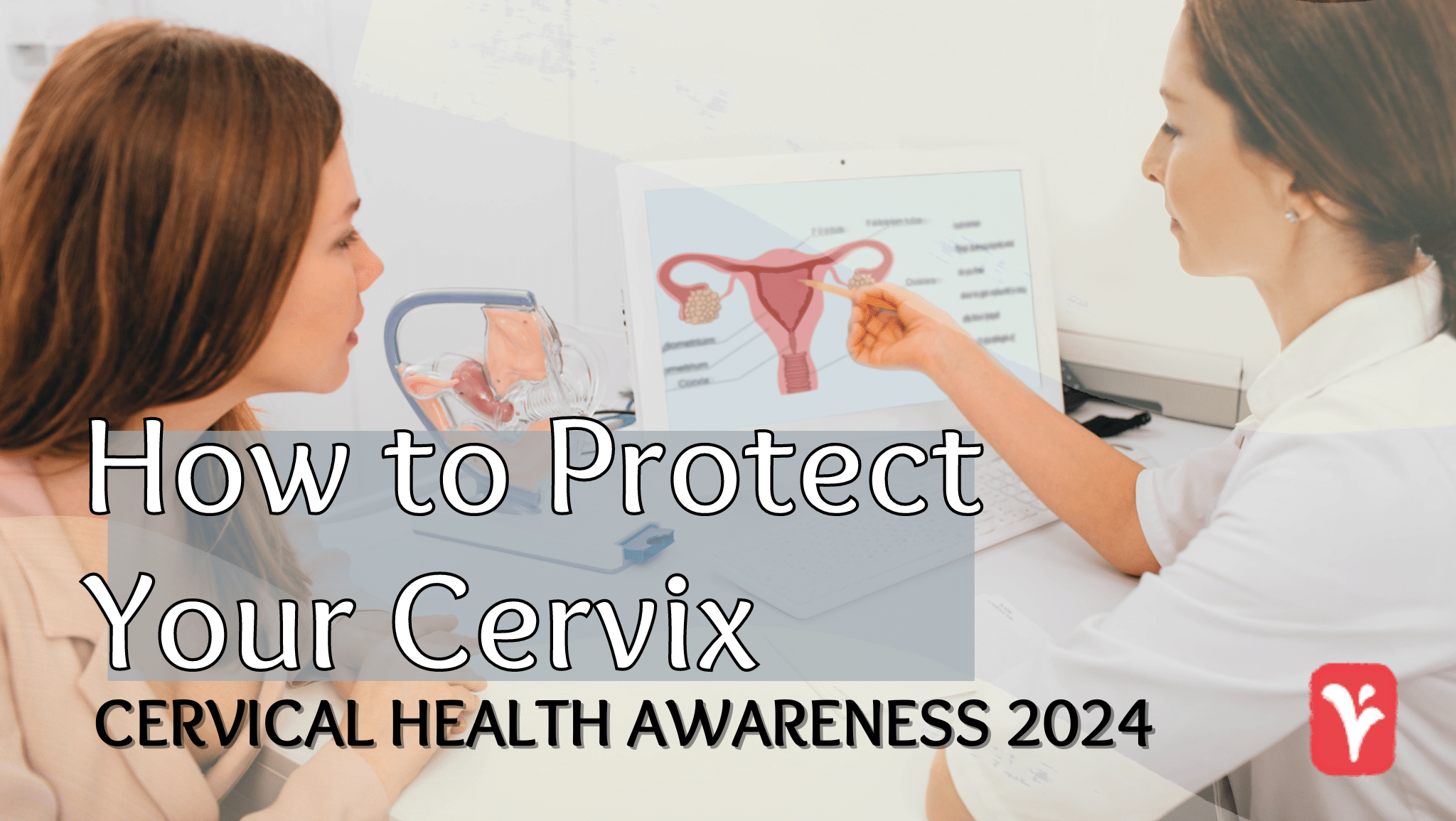January was Cervical Health Awareness Month, a time to raise awareness about cervical health and cancer prevention.
The cervix is the neck of the uterus, connecting the vagina to the uterus. Though the cervix is a small organ, usually about 2-3 cm long, cervical cancer, which is preventable, can be deadly.
Cervical cancer is the fourth most common type of cancer among women. By following routine screenings, receiving vaccinations, and practicing safe sex, you can significantly reduce your risk of cervical cancer.
What causes cervical cancer?
Almost all cervical cancer is caused by the human papillomavirus (HPV). HPV is a sexually transmitted infection (STI) that is as widespread as the common cold. You contract HPV by having anal, oral, or vaginal sexual contact with someone who has the virus.
The majority of sexually active adults will have been exposed to an HPV infection in their lifetime. There are over 150 types of HPV strains, with 12 high-risk types. High-risk types of HPV are more likely to cause cancer. HPV 16 and HPV 18 are the most likely to cause cervical cancer. Many types show no symptoms, highlighting the importance of routine testing.
According to the Centers for Disease Control and Prevention (CDC), up to 93% of cervical cancers are preventable. In fact, a new study published in the Journal of the National Cancer Institute shows impressive results. The study followed a national cohort of women in Scotland who were born between 1988 and 1996 and fully vaccinated between ages 12 and 13. The study found zero cases of cervical cancer among them years later.
Cervical cancer screening looks for cell changes and precancerous cells. Early-stage cervical cancer is usually treatable. Treatment can prevent cervical cancer from developing.
How can you protect your cervix?
Raising awareness about protecting your cervix is important during Cervical Health Awareness Month, but it’s a simple process year-round. Vaccines, timely screenings, and using a barrier method, such as latex condoms or dental dams during sex, can reduce the risk of HPV.
The HPV vaccine is highly effective at preventing cervical cancer. Gardasil is the most commonly distributed vaccine for HPV in the US. People of all genders can receive the HPV vaccine between the ages of 9 and 45. You may receive 2 or 3 shots, depending on your age.
In Scotland, the HPV vaccine is offered as a part of routine immunization in schools, leading to such results in the recent study. The HPV vaccine is even more effective when received at an earlier age.
Cervical Health Awareness Month is a great time to schedule your routine screenings. Austin Women’s Health Center offers convenient STI testing and the Gardasil vaccine. You can also come to AWHC for your cervical cancer screening, which is a simple Pap test, an HPV test, or a concurring HPV and Pap test. The Pap test, also known as a Pap smear, and the HPV test are both essential tools in women’s health, particularly for cervical cancer screening, but they serve distinct purposes.
The Pap test primarily aims to detect abnormal cervical cells, including precancerous and cancerous cells. During a Pap test, a healthcare provider collects cells from the cervix and examines them under a microscope for any irregularities. This test has been a cornerstone of cervical cancer screening for decades, helping to identify potential issues early on.
The HPV test checks explicitly for high-risk strains of the human papillomavirus (HPV) in cervical cells. HPV is a common sexually transmitted infection, and certain strains are known to increase the risk of developing cervical cancer. The HPV test is instrumental in identifying women who may be at higher risk for cervical cancer due to HPV infection, providing valuable information for further management and monitoring.
While both tests contribute to cervical cancer screening, they differ in their focus and frequency. By detecting the presence of high-risk HPV strains, the HPV test provides additional insight into cervical cancer risk beyond what the Pap test alone can offer.
How often should you receive cervical cancer screening?
Screening recommendations for HPV depend on your age bracket and prior Pap or HPV test results. After an abnormal screening, your provider may recommend less time between your screenings. A doctor may determine you require more consistent screenings if you are HIV positive, have a weakened immune system, or have had cervical cancer in the past.
– Age 21-29
Receive your first Pap test at age 21, followed by a Pap test every three years.
– Age 30-65
Receive an HPV test every five years, an HPV/Pap co-test every five years, or a Pap test every three years.
– Age 65+
Your doctor can determine the suitable testing method for you in this age group. If you’ve had regular screening with typical results, a provider might recommend that you no longer need screening. A provider may recommend further screening if you’ve had a prior abnormal result or have not had regular screening.
A healthy lifestyle can also help facilitate cervical health. Practices like getting enough exercise, not smoking, and eating a diet rich in fruits and vegetables can also help reduce the risk of cervical cancer, alongside receiving routine screenings.
While January was Cervical Health Awareness Month, it’s always a good time to schedule your routine screening and help protect your cervical health! If you have questions about whether you can receive Gardasil or when your next Pap test should be, our providers would be happy to assist you.
